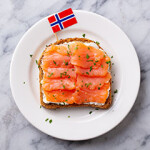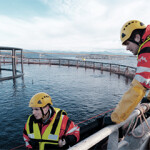Alaska removes funding for king, coho salmon hatcheries

Alaska plans to stop providing state funding for hatcheries that produce king and coho salmon, according to a KFSK radio report.
The state of Alaska has in the past provided millions of dollars to king and coho hatcheries from money collected via a surcharge on sport fishing licenses, along with allocations of federal sport fishing money.
However, the surcharge was created explicitly to fund construction costs of hatcheries in Anchorage and Fairbanks and as construction of both facilities has since been completed, the legal justification for continuing to collect fees on licenses has expired. Earlier this year, Alaska Governor Mike Dunleavy introduced bills that would provide future funding for hatchery maintenance and operations, but the proposals did not get considered by Alaska’s House or Senate due to a shortened legislative session caused by the COVID-19 pandemic.
Additionally, the program also faced financial pressure due to lower sport-fish license revenue, which has dropped more than USD 5 million (EUR 4.2 million) due to the fact that travel to Alaska has been severely restricted due to the coronavirus pandemic, according to Alaska Department of Fish and Game commissioner Doug Vincent-Lang.
State-owned hatcheries such as Crystal Lake are among those that will be affected. Crystal Lake releases its king salmon near Petersburg, Wrangell, Ketchikan, and Craig. Some 40 percent of hatchery king salmon caught in the Southeast originate at Silver Lake.
“It’s going to be difficult,” Southern Southeast Regional Aquaculture Association (SSRAA) general manager David Landis said. Crystal Lake is operated by the SSRAA on a contract basis. “I won’t mince any words here. There’s a funding shortfall and it’s going to be hard to fill those gaps because SSRAA has had several years of poor returns from our cost recovery fish and so we’re in a deficit situation to begin with and this certainly isn’t helping.”
Landis said he is optimistic the hatcheries will still be able to deliver their planned offloads of fish currently being reared. In May 2021, 1.4 million Crystal Lake fish are scheduled to be released and in 1.8 million are expected to be released in 2022.
“It was unexpected to have to grapple with this particular issue. We’ve got plenty of other things to go around and budget impacts especially with our deficit cost recovery situation but we’ll tackle this head on and hopefully come to a conclusion that will be positive,” Landis added.
Vincent-Lang said he hopes legislation restoring funding to the hatcheries will be approved by the state government in the future.
Photo courtesy of Southern Southeast Regional Aquaculture Association






Share